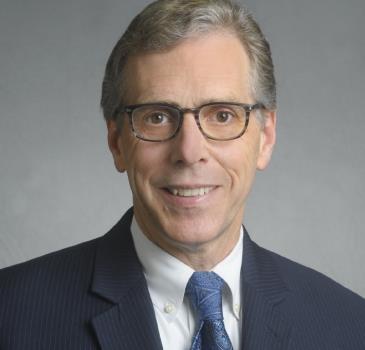Research confirms that burnout impacts nearly every aspect of residency, but how can programs actually help residents improve quality of life in training? AMA Wire® spoke to Timothy Brigham, PhD, senior vice president of the department of education and chief of staff at the Accreditation Council for Graduate Medical Education (ACGME), about the organization’s efforts to support resident wellness and why an answer to that question requires a collaborative plan. Here’s where he says the real solution begins.
Q: In November 2015 the ACGME will convene a conference on physician well-being. What made the ACGME decide to pursue this issue?
Brigham: Last summer, the tragic suicides of three residents within a few weeks of each other prompted the ACGME Resident Council and Board of Directors to focus on the issue of physician well-being. Our focus includes building resiliency; recognizing stress, depression and burnout; creating interventions to promote well-being; and learning from the experience of the tragedy to help other grieving communities manage their grief.
Q: Since launching this project, has the ACGME found any data that really surprised you?
Brigham: Yes. For one, it appears that when people enter medical school on the first day of orientation, they are psychologically healthier than their same-age cohorts. But after they enter training, their depression and burnout rates increase compared to their peers.
So, it appears we’re taking a group of psychologically healthy people, and something happens to them in training. It also appears that physicians in training commit suicide at a lower rate than their same-age cohorts. Outside of medicine, however, practicing physicians commit suicide at a higher rate than people in any other profession.
Statistics show that about 400 physicians a year are estimated to commit suicide. Let’s put that in perspective: That means one physician a day, or roughly three average-sized medical school classes.
What we’ve been trying to figure out now is: While the rate of suicide may be lower for residents compared to their same-age cohorts, are we planting the seeds in training that come to negative fruition in practice?
While the tragic suicides of the three residents were the initial impetus for our efforts, we plan to broaden our focus to all aspects of physician well-being.
Q: Considering the complexity of the problem, are there any actionable solutions for physicians and program directors to consider? And if so, which are top-of-mind for the ACGME?
Brigham: Right now, the ACGME has decided to host a working conference that’s designed to understand the scope of the problem and begin discussing solutions. It’s not a conference for people to gather, hear some interesting and empowering speeches, and go home. Instead, we are inviting 100-120 people including residents, physicians and professional from other fields to propose solutions.
What we want to do is understand the problem and give recommendations to the ACGME board about what the ACGME can do in the realm of its responsibility. For instance, we may recommend modifications to GME requirements, milestones, and other career and educational factors that the ACGME oversees.
We’d also like to build collaborative opportunities—let’s say between the AMA, ACGME, AAMC and others, for instance—to make sure we’re taking the most comprehensive approach to improving wellness.
This conference is really a launch for solutions and not a stand-alone event. We’re looking for transformative cultural change at an institutional and national level. We also plan to examine practices from other organizations outside of medicine to see what lessons we can learn for physicians to share with each other. Burnout and physician suicides are really sobering, sad topics, but we hope to learn from these tragedies to make life better for residents and faculty members.
Q: Do you think there is a stigma around mental health in medicine? If so, how can programs and schools work together to help reduce this for physicians in training?
Brigham: There are a number of variables at play. There’s a stigma attached to admitting vulnerability because no one wants to be considered a problem. For many residents and faculty members, there’s an assumption that if you’re a physician, you have to transcend what a normal human being can do. There are also licensure issues, and some residents have concerns that if they seek psychological treatment, they’ll put their entire careers in jeopardy.
And in terms of how schools and programs can destigmatize this—that’s the golden question we’re looking to answer at the conference. This will take a constellation of efforts.
This has to be collaborative change. We—as a collective community in medicine—have to come together to help move the needle forward.
Also, review the 5 things institutions can do to prevent resident burnout, and educate yourself on the signs of burnout to maintain better wellness.




